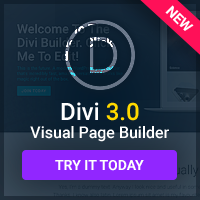One thing that lots of designers don't seem to understand is that there's a big difference between the kind of design you should use if you're trying to present information (usually with ads), and the kind of design you should use if the aim of your website is to make sales. This distinction causes a lot of confusion, bad design, and, ultimately, lost sales. If you're trying to sell, then there's a whole other set of design principles that you need to follow.
The Headline is Everything.
If you want your website to make sales for you, then the first thing you need to pay attention to is the headline on your sales page. It needs to be large, to stand out, and to grab the visitors' attention. It should give a clear benefit (not a feature) of your product that you think would appeal to most people. If you have a bad headline then people won't even look at the rest of what you've written they'll just press the back button.
Always Be Ready to Make the Sale.
As soon as a visitor gets to your product's page, it should be absolutely crystal clear what they've got to do to buy the product. If it's a long page, then ‘buy' buttons should be scattered throughout. If a visitor could look at any part of your page and wonder where they have to click to buy the product, then there's something fundamentally wrong with your website's design.
Make Happy Customers Prominent.
On a sales page you should have a space for feedback that has been left by previous customers, whether it's in the form of reviews or testimonials. This gives people an opportunity to read a supposedly objective view of your product, and makes them feel better about spending their money on it. Of course, this means that you need to solicit feedback from previous customers to put in that space a good way of doing this is to offer rewards for customers who contribute in this way.
Pay Attention to Payment.
You need to make sure that your payment page that is, the page where you collect credit card details is well laid out and easy to use. Doing things like making it difficult to type in a credit card number or making it confusing to choose what kind of card you have is likely to damage the customer's confidence in you and your website. This page should be professional and standard don't be tempted to do anything unusual with it.
Highlight Special Bonuses.
To help persuade potential customers who are on the fence about whether to buy or not to buy, you should take care to highlight any special bonuses that purchasing your product will give them. For example, a physical product might come with free delivery, and a non-physical product might come with a free ebook. Don't go overboard and have a ridiculous number of bonuses, but do add enough to make the customer feel like they're getting very good value for their money.
Keep It Simple.
When you're designing a website that is going to be used to sell products, you've got to keep things as simple as possible on the technical side. That's because the more complicated functions you use, the more things there are that could go wrong and stop them from buying anything from you. It's better that people see a slightly less fancy website than that they don't see one at all because if they don't see your website then they won't be doing any shopping there.
To understand the basics of how e-commerce websites work you should look at as many other websites as you can. Write down the elements that they all seem to have in common for example, shopping carts and you will gradually figure out which things are essentials and which things are just bells and whistles. Your website should leaev out everything but the essentials, but make the essential things very easy to do. That is the key so successful e-commerce design, and if you can manage it then it will be very rewarding for you and your website.


